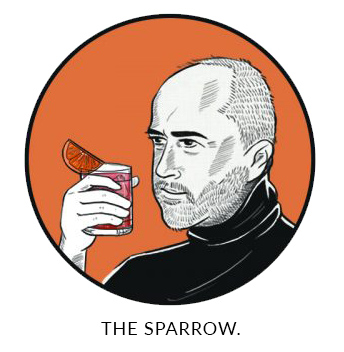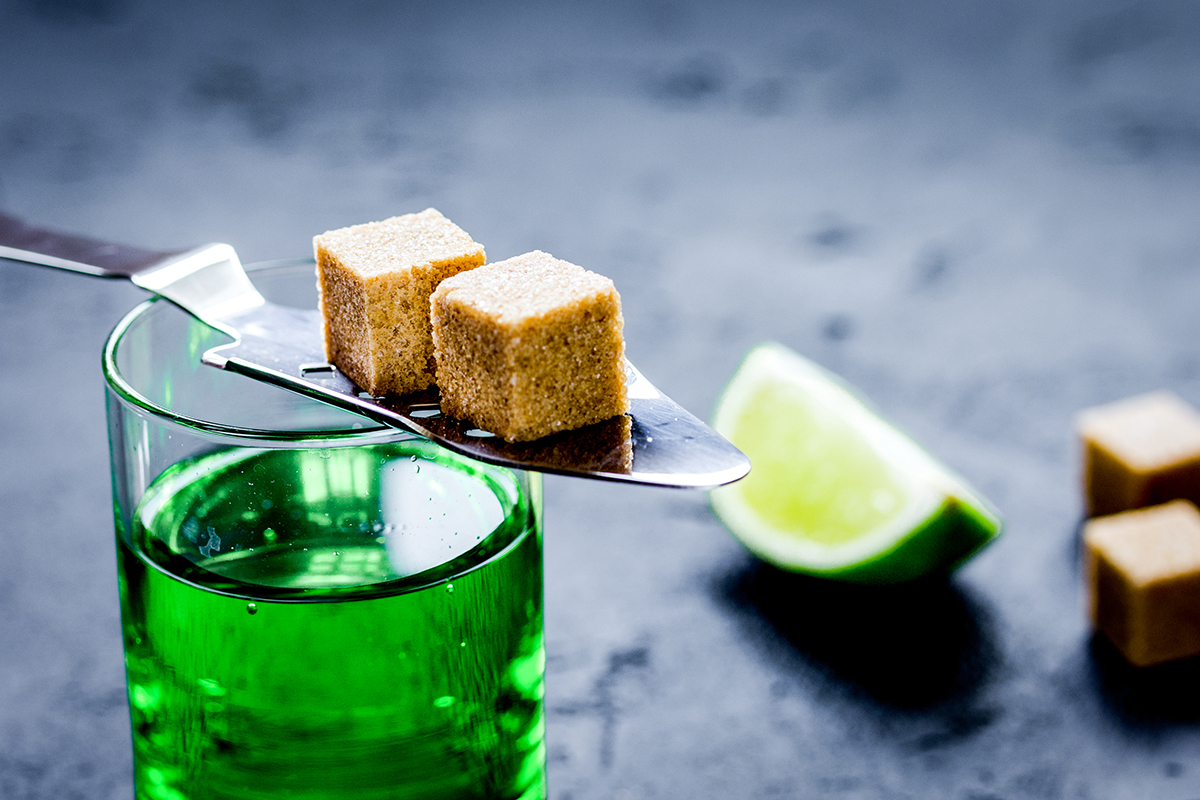Absinthe, like coca cola, had its origins as a herbal remedy.
Its key ingredient, wormwood (artemisia absinthium), is thought to have wide-ranging benefits from a cure for flatulence to killing cancer cells. First made by the French doctor, Pierre Ordinaire, in 1792, his intention was to create an easy way for wormwood to be taken by his patients. Dr. Ordinaire was living in Switzerland at the time and after selling his recipe to the father in law of a certain Mr Pernod, it went into commercial production in 1797.
By the mid-1800s it was popular in the upper levels of French society and by the 1870s it spread across the spectrum after a bad year for vineyards in France led to a wine shortage. Popular amongst artists, writers and poets it became synonymous with the avant-garde in Paris in the late 1800s. By the time we get to the end of the 19th century the popularity of the “green fairy” had spread across Europe and there were even absinthe bars opening in America.
However, all was not good in the world of absinthe. By the time we get to the early 1900s its reputation as an addictive, hallucinogenic with brain-altering effects led to it being banned in America and across Europe. However, by 1990 it made a resurgence due to studies showing the negative claims to be exaggerated and new EU rules relaxed restrictions on certain kinds of distilling.
Recipe
45ml absinthe
1 sugar cube
Iced water
Slotted Spoon
Drinking absinthe in the traditional way with sugar requires a slotted spoon. You can buy dedicated absinthe spoons and if you plan to drink it often or like the theatre then you should probably invest in one. There are plenty of places online to get one and they cost less than $20.
Pour your absinthe into a glass then place the slotted spoon with the sugar cube over it. Gradually drip the water over the sugar cube until you get the desired strength. The taste of wormwood is not for everyone. The water changes the drink to a milky green colour and with the sugar it makes the drink more pleasant to drink.
Hemingway
Hemingway generally avoided sugar in drinks so he probably did not use the cube method. Although already banned by the time he lived in Paris in the 1920s it is likely it was here he first became acquainted with it.
In chapter four of The Garden of Eden, absinthe is disguised in “an ordinary Pernod bottle”. Our main characters, David and Catherine are in a café in the south of France. David, “…poured the water in a very thin stream and the girl watched the absinthe cloud opalescently.”
“Why does it have to go in so slowly?” Catherine asks.
“It breaks up and goes to pieces if the water pours in too fast,” he explained. “Then it’s flat and worthless. There ought to be a glass on top with ice and just a little hole for the water to drip. But everyone would know what it was then.”
Hemingway is referring to the impact of the water on absinthe so even if you are not using sugar you should pour the water slowly.
The Sparrow
My first encounter with absinthe was in the Death in the Afternoon cocktail. It certainly hits you hard and it is worth noting the strength of the drink before rushing into a big mouthful. I used the Mythe Absinthe from Turenne in France. Made with respect to traditional recipes the ingredients read, alcohol, water, plants, wormwood (artemisia absinthium) it weighs in at 69% vol. There are a lot of absinthes out there (over 200) and I would highly recommend doing a little research and using one with a close relationship to the originals.
After my experience with Death in the Afternoon, I approached this drink with more than a little hesitation. I ordered my absinthe spoon online and bought some sugar cubes in anticipation. However, I was shocked by how much I enjoyed this drink. The sugar does a remarkable job in smoothing the strength of the alcohol. There was a bit of a sugary slurry at the bottom of the glass to be aware of but overall I really enjoyed it and I would definitely drink it again.



